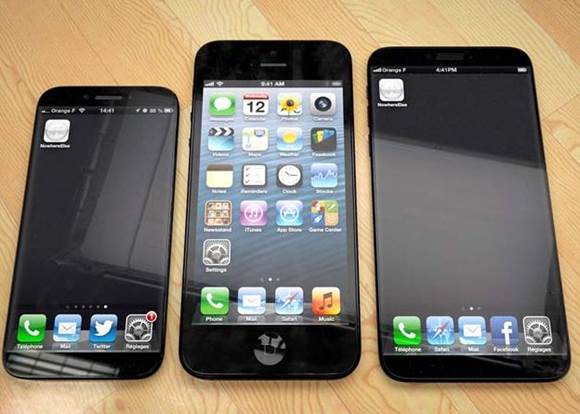Super-sizing the iPhone might be
easier than you think
You can’t just ask customers what they want
and then try to give that to them. By the time you get it built, they’ll want
something new,” Steve Jobs famously said, referring to the way in which Apple
isn’t known for looking to its competition, or even to its customers’ whims,
when it comes to developing future products. It’s a notion that underpins the
current debate over whether or not we’ll see a super-size iPhone come out of
Cupertino this year.

It’s
a notion that underpins the current debate over whether or not we’ll see a
super-size iPhone come out of Cupertino this year
Samsung’s Galaxy S III and Note II, HTC’s
One X+ and even Blackberry’s Z10 are all towering over the four-inch mark and
they’re selling-proof, if nothing else, that there’s a demand for larger
devices. What’s more, developers have told us that it’s technically possible
for Apple to build an iPhone with a larger screen without sacrificing its
ecosystem, but that’s only half of the story here.
Back in January, the China Times made some
pretty bold claims about Apple’s plans for 2013, suggesting that Apple would
launch an iPhone with a 4.8-inch display, dubbed the ‘iPhone Math’, before the
end of June. The name might seem a little bizarre, but the math’s certainly
supports it. Instapaper creator Marco Arment did some calculations, pointing to
the way in which the iPad mini used a screen with the pixel density of a 3GS at
an iPad-sized resolution. With that, he argued that a super-sized iPhone could
feature a screen with the pixel density of a Retina display iPad with an iPhone
5-sized resolution.

With
that, he argued that a super-sized iPhone could feature a screen with the pixel
density of a Retina display iPad with an iPhone 5-sized resolution.
The result? A 640 x 1,136, 246 dpi screen
that measures 4.94 inches on the diagonal – a little off from China Times’
suggestion of a 4.8-inch measurement, but not so far off that it becomes
impossible. It’s not just the match between rumor and science that makes this
an entirely plausible set of specs, either. Phillip Caudell, senior iOS
developer and designer at 3 Sided Cube, the developers behind apps from the
American Red Cross and Boots, points out that Apple, “could keep the resolution
exactly the same, but just decrease the pixel density to achieve a bigger
display. This would require no work from developers, as the resolution hasn’t
changed.”

A
larger iPhone suddenly becomes harder to hold, difficult to operate with one
hand and a little less portable.
Keeping developers on side and apps
available to every device is key to Apple, where the iOS ecosystem is a huge
selling point for its devices. From a technical perspective, then, a 4.94-inch
iPhone could work but that doesn’t necessarily confirm anything. Tim Cook was
keen to point out during Apple’s Q1 2013 earnings call that, “The iPhone 5
gives customers the best display without sacrificing ease of use,” and that’s
important. A larger iPhone suddenly becomes harder to hold, difficult to
operate with one hand and a little less portable. In the wake of reports that
Apple was working on a cheaper iPhone, the message from Cupertino was that it
was focused only on creating products that gave users the best experience
possible. Whether a super-size iPhone would provide this is very much up for
debate.